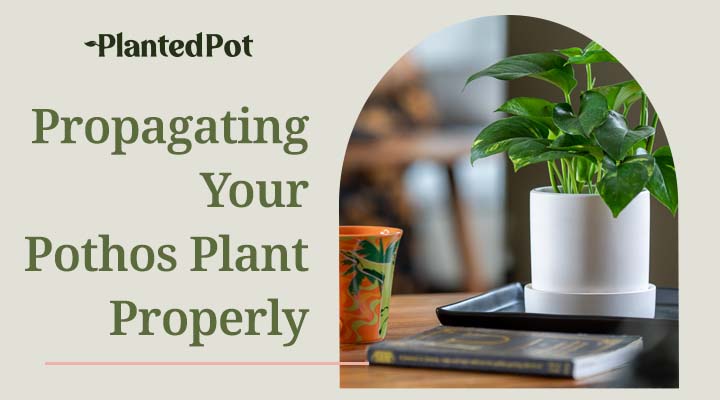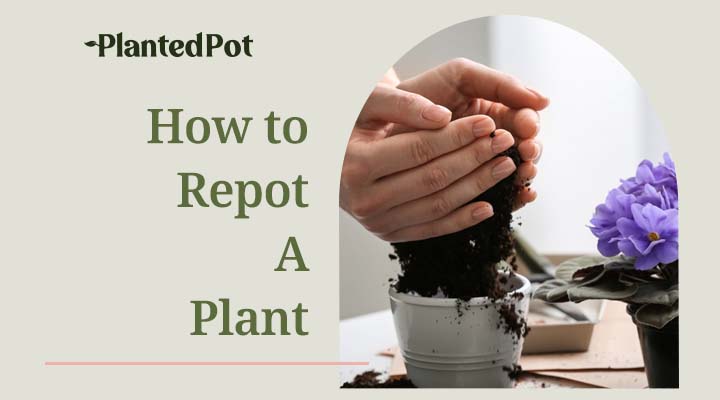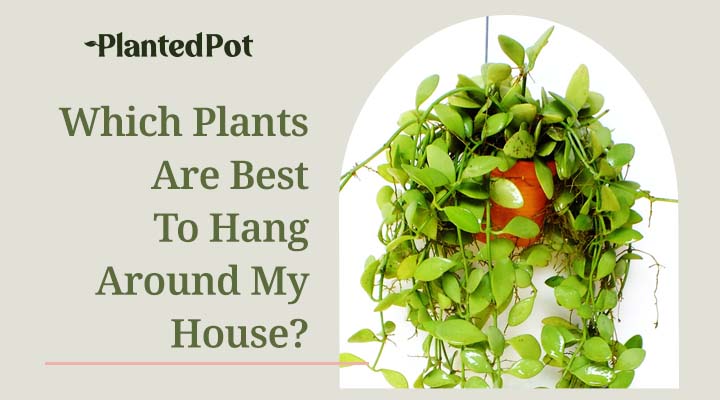
Spider Mites On Plants [Early Signs, Prevention, & Removal Tips!]
Home / Spider Mites On Plants [Early Signs, Prevention, & Removal Tips!]
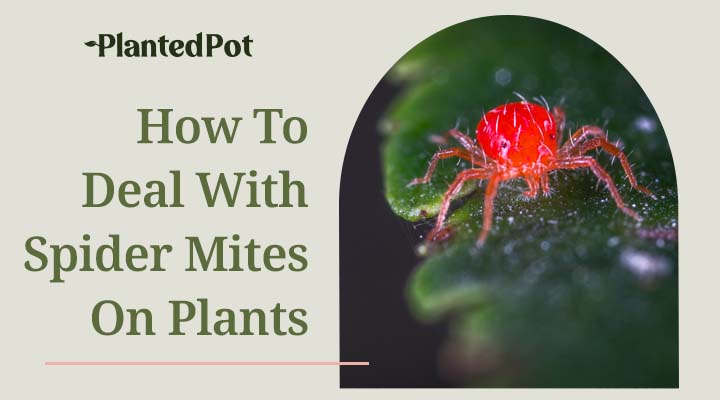
Spider Mites On Plants [Early Signs, Prevention, & Removal Tips!]
- Camilla Salas
- January 10, 2022
- 12:33 pm
- No Comments
It’s probably pretty obvious that we love gardening here at Planted Pot. Still, even those of us who have plant care down to a science have difficulty maintaining our greenery sometimes. One of the most common and annoying disruptions to perfect plant health is spider mites on plants.
Though they are referred to as insects and mites, spider mites are small members of the arachnid family and are related to ticks and spiders. But before you let these creepy crawlies cause you any worry, let’s read a bit more about what they are, why they nest on plants, and how to keep them at bay!
What Are Spider Mites?
Spider mites are one of the most common tiny pests. They have eight legs and are normally about 1 mm in size. Like their namesake, they resemble tiny spiders and spin silk webbing around the leaves they nest on.
They mostly spin webs on stems and the undersides of leaves, where they also lay their eggs. Though this practice is mainly done for protection, this webbing is a telltale sign that you have a spider mite infestation rather than a different kind of mite or pest.
However, unlike spiders, you won’t have to worry much about these mites biting you, your children, or your pets. Though they can bite humans and occasionally will if provoked, they are not harmful to us, and their bites may only cause mild irritation or rashing. Spider mites prefer to eat plants instead of feeding on humans or animals like ticks or other mites do.
They don’t just eat any part of the plant — they specifically feed off of chlorophyll, which is the green pigment found in most plants. Spider mites ingest chlorophyll by biting into the plant and sucking the chlorophyll out of individual plant cells.
Chlorophyll is an important component in photosynthesis and is known for its health benefits. Even though spider mites aren’t considered beneficial insects, they sure do have good taste!
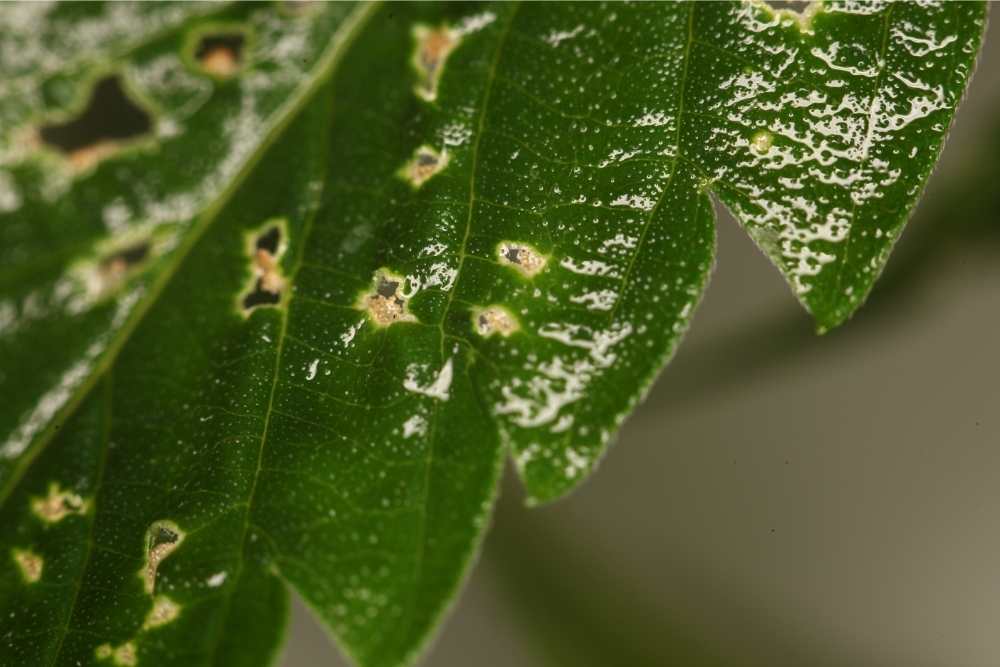
What Causes Spider Mites on Plants?
Spider mites will nest on both indoor and outdoor garden plants for several reasons. Let’s jump into a couple of the most common reasons, so you can begin caring for your affected plants and better prevent mites on any new plants you adopt.
The Dryer, The Better
Spider mites thrive in warm, dry, dusty environments. This means that they love areas experiencing drought and survive best on plants that have been underwatered. They also have greater egg fertility in low moisture areas and build stronger webs in dryer spots. This makes dry plants some of the best homes for spider mite populations.
Too Many Nutrients
Spider mites are also attracted to plants with high nitrogen, phosphorus, and carbohydrates. Some plants enjoy and thrive off of high amounts of macronutrients, so it’s not uncommon for store-bought fertilizers to be rich in them. Plants that enjoy added macronutrients include:
- Cucumbers
- Carrots
- Zucchinis
- Tomatoes
- Big, leafy vegetables, like kale, lettuce, and bok choy
- And more!
While some added nutrients can be great for plants, too much of a good thing can attract spider mite infestations. When plants absorb too many synthetic macronutrients, they create and release small compounds through their sap. These compounds don’t have a function and aren’t necessarily good or bad for the plant. However, they can make plant sap sweeter, attracting mites and other insects.
What Do Spider Mites Do?
As a friendly reminder, spider mites aren’t predatory toward humans or pets. Their main objective is to feed off plant tissue and sap nutrients. Their feeding habits can cause mild to more serious damage to indoor and outdoor plants.
How Do I Know If I Have Spider Mites?
One of the earliest signs of spider mites is also one that’s highly noticeable. Before they even begin to form webs on plants, leaves and stems will begin to appear discolored or spotted. You may even notice discoloration holes!
If you begin to notice your plant turning yellow or bronze, it may be good to keep an eye out for other signs of spider mites, as further damage can end up killing parts (or all) of your plant.
First Signs of Spider Mites
Along with general discoloration, small, lightly colored dots may also begin to appear on the leaves of your plants. If you look closely enough, you may notice slight movement on the plant (this would mainly occur on the undersides of leaves).
These signs are usually easy to spot if you already know what you’re looking for, especially for those who frequently tend to their gardens and houseplants. The biggest telltale sign that you’re dealing with spider mites and not a different kind of mite or pest is webbing.
Once web clusters begin to form on your plants, you likely already have a serious infestation. Fortunately, though, most plants can be saved and repaired once the spider mites themselves are taken care of.
What Are Ways To Get Rid Of Spider Mites?
While insecticides can be a guaranteed solution to most microscopic pests, you can try many natural solutions before using harsh chemicals.
Manually Removing Spider Mites
Did you know that you can manually remove spider mites? That’s right! If you aren’t facing a more severe infestation, you may be able to remove spider mites yourself. Try using a damp cloth or rubbing alcohol on a rag to wipe leaves and stems. Don’t forget to check the undersides of each leaf!
Water Removal
Water can also be enough to get spider mites off plants if caught early. Try watering down your plants’ leaves with a hose with variating water settings. More delicate plants may need more gentle hosing than stronger, more durable ones. If you still notice mites holding onto your plants after watering, you may have to try another method to get rid of them.
Natural Pesticides
Did you know that plenty of natural pesticides will help eliminate common pests, too? Using pesticides doesn’t mean you have to use harsh chemicals. The following natural pesticides may be helpful to you if you need more help than manual or water removal:
- Salt spray, which will not only keep mites and other pests away but will also help your plants absorb nutrients better. You can make this solution at home by mixing water and salt in a spray bottle!
- Natural horticultural oils and sprays, like bitter neem oil or azadirachtin (from neem seeds), eucalyptus oil, sesame oil, soybean oil, and others. Note that while most horticultural oils are non-toxic on their own, neem oil can cause a lot more damage to mites and other insects and should be used more carefully.
- Chrysanthemum flower tea. Many chrysanthemum flowers contain pyrethrins, a grouping of chemicals known to be toxic to many insects. After being brewed, let the tea cool before adding it to a spray bottle for use.
- Boric acid. This acid has been used to help fight bugs since the 1940s and physically harms mites and other insects if they walk over it. Be mindful that boric acid should be used carefully and not near pets or children, as it can irritate skin or cause an upset stomach if accidentally ingested.
Predatory Mites
If all other methods fail, you may want to look into using predatory mites to help solve your spider mite problem. These mites are natural predators to the spider mite and can be purchased and released onto indoor and outdoor plants. These beneficial insects will only feast on spider mites, so you won’t have to worry about damaging your plants further or hurting other beneficial insects.
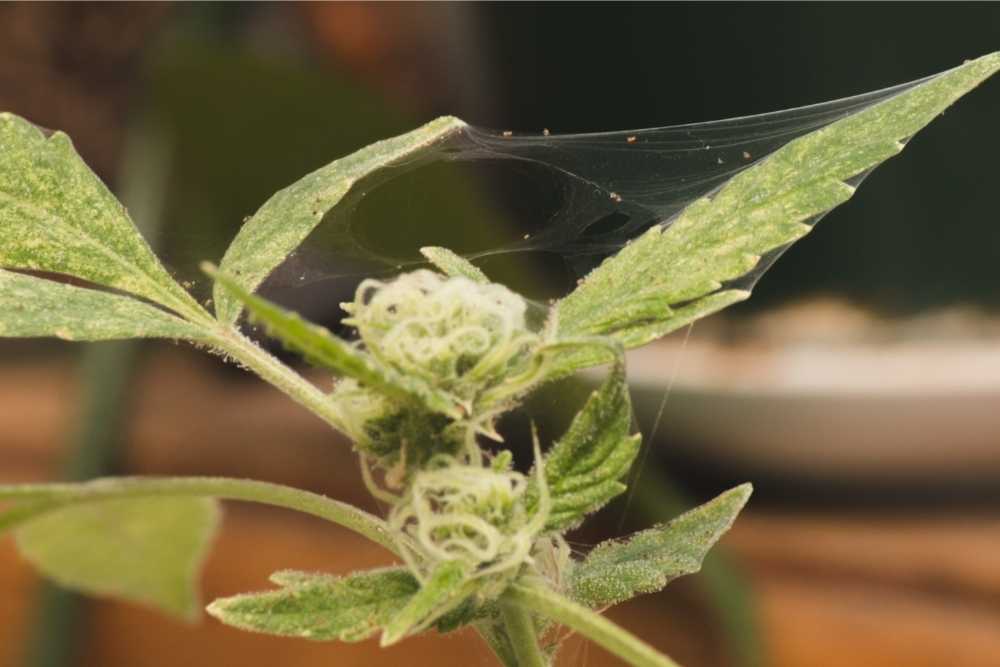
What Are Steps To Prevent Spider Mites?
The best way to prevent spider mites is to keep your plants healthy and well-watered. Spider mites cannot climb up and nest when plants are moist and watered correctly. Proper and regular watering can also break any new webbing before the mites can rebuild and kill both eggs and adult mites.
If proper care alone doesn’t help keep mites away, you might need external intervention, like using the home remedies or natural pesticides mentioned above. Even though spider mites aren’t very harmful to humans, we still recommend being cautious when removing them, as being bitten by any can be an annoyance.
Is Spider Mite Damage Permanent?
No! The sooner you discover spider mites, the better a chance your plant will have at recovery. Depending on how soon the damage is caught, most of the time, plants can make a full recovery after you have gotten rid of all mites.
The amount of time it takes for your plant to recover also depends on how severe the infestation was. Sometimes, severe infestations can kill entire plants, especially when left without intervention. This is why it’s important to take action as soon as you notice any signs that you may have spider mites.
Can Plants Recover From Spider Mites?
Plants that have only had mite damage to a few leaves will probably recover quickly without special care or attention. However, those with more significant damage may require a lot more extra attention due to damage and stress on their leaves and stems.
How Do I Help My Plant Recover?
After you rid your plants of spider mites, the best way to help your plant recover is by getting it back onto a normal routine. Continue a proper watering schedule, and be mindful that your plant receives enough light. By being gentle and patient with your plant, you’ll be able to slowly nurse it back to health.
Final Thoughts – Spider Mites On Plants
Spider mites can be a real pain, but that doesn’t mean we have to live with them! Many natural solutions can be employed to eliminate spider mites so that your plant babies can continue to flourish and grow strong.
Want to read more about general plant care or protecting your garden from pests? Check out Planted Pot’s Learn section to learn more and keep growing your plant knowledge.


